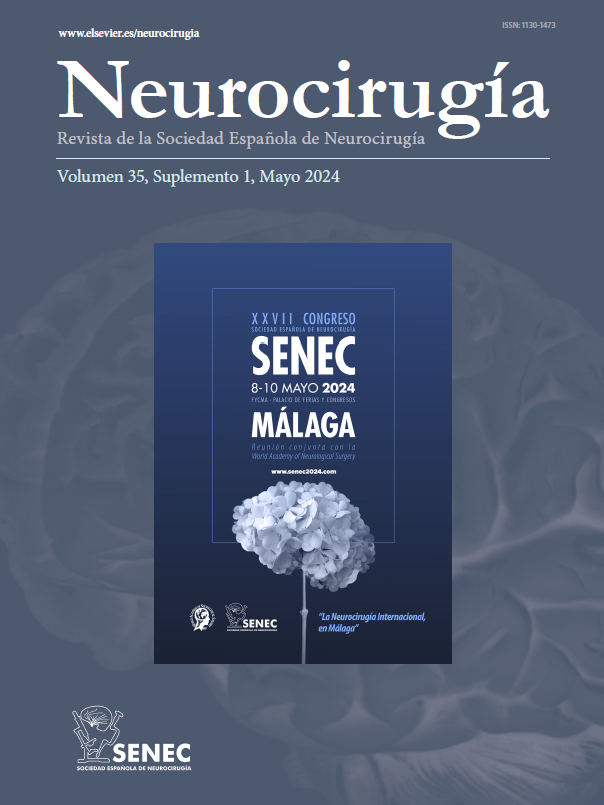O-026 - NEW HERNIA BLOCKING DEVICE PREVENTS RECURRENCE OF LUMBAR DISC HERNIATION
1Instituto Clavel, Hospital Quirónsalud Barcelona, Barcelona, Spain; 2Neurosurgery Department, Hospital Universitari de Bellvitge, L´Hospitalet de Llobregat, Spain; 3Neurosurgery Department, Hospital Universitario de Canarias, San Cristóbal de La Laguna, Spain; 4Neurosurgery Department, Hospital General Universitario Gregorio Marañón, Madrid, Spain; 5Neurosurgery Department, Hospital Universitari Germans Trias i Pujol, Badalona, Spain; 6Spine Unit, Hospital Universitario Fundación Jiménez Díaz, Madrid, Spain.
Introduction: Surgical treatment of lumbar herniated disc (discectomy) is a successful operation in most patients. However, in patients with large annular defects who undergo limited discectomy (high-risk patients), recurrence rates of up to 27,3% have been described.
Objectives: The aim of this study was to evaluate the performance and safety of a hernia blocking device, implanted after discectomy, in order to prevent recurrence of herniated disc.
Methods: Prospective, multicenter clinical study (6 sites in Spain), of one treatment arm. Thirty patients with a postero-lateral disc herniation between L4-S1 and large annular defects (> 6 mm wide), who underwent a limited discectomy with standard posterior approach and were treated with a new Hernia Blocking System (DISC care, NEOS surgery S.L.), were included. Patients were evaluated at 6 weeks, 6 months, 1 year, and 2 years after surgery, using radiological imaging (X-ray, MRI, and CT) and clinical evaluation. The primary endpoint of the study was the incidence of symptomatic reherniation. In addition, disc degeneration, leg and back pain (NRS 0-10), ODI, and device safety, among others, were evaluated.
Results: Thirty patients (43.3% female, 41.7 ± 10.9 years) with large annular defects, who underwent limited discectomy, were implanted with the device under study in a mean of 16.0 ± 9.6 minutes. Two years after surgery, no symptomatic reherniation was detected and disc height was maintained in all patients included. 100% of patients had a significant reduction in leg pain (> 2 points in the NRS) and 84.6% improved > 15 points in the ODI. No product-related SAEs were detected during the study.
Conclusions: Implantation of a Hernia Blocking System after limited lumbar discectomy prevents hernia recurrence and disc degeneration in patients at high risk of reherniation.







